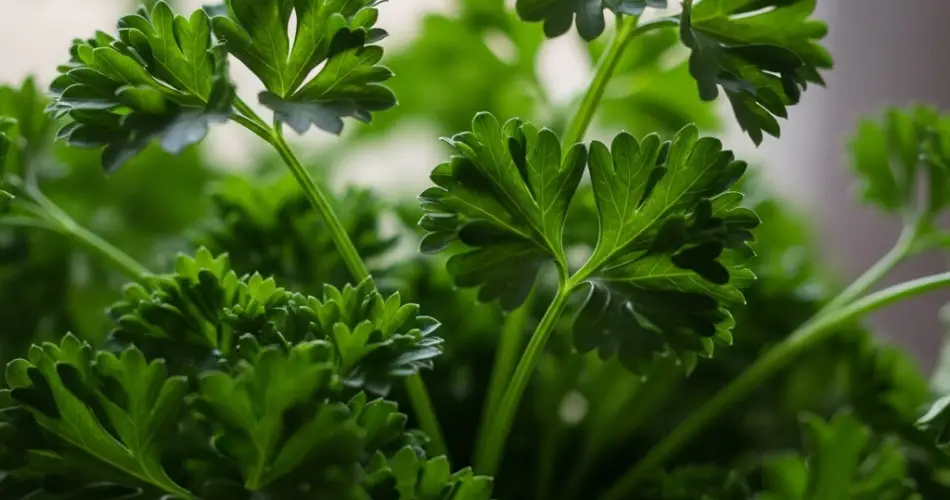Parsley is one of the most popular and widely used herbs around the world. Whether you’re adding it to a soup, using it as a garnish, or blending it into a fresh sauce, parsley brings a mild, fresh flavor to countless dishes. But when it comes to growing parsley at home, gardeners often wonder: is flat-leaf or curly parsley easier to grow?
Both types have their merits, but depending on your climate, gardening style, and intended use, one may suit your needs better than the other. Here’s a detailed comparison of flat and curly parsley, along with tips for growing each successfully.
Flat-Leaf Parsley (Italian Parsley)
Flat-leaf parsley, also known as Italian parsley, features smooth, broad leaves that resemble cilantro. It has a more robust flavor than curly parsley, making it the preferred choice for cooking. Its leaves are easy to chop and blend well into sauces, dressings, and marinades.
Advantages of Growing Flat-Leaf Parsley:
-
Stronger flavor: It’s more aromatic and flavorful, especially when used fresh.
-
Easier to clean and chop: The flat leaves don’t trap dirt and are easier to work with in the kitchen.
-
Tolerates heat better: Flat-leaf parsley tends to be more resilient in warm climates and less likely to bolt early.
-
Faster growth: It typically grows more vigorously than curly varieties.
Growing Considerations:
Flat-leaf parsley thrives in full sun to partial shade. It requires well-draining soil rich in organic matter and regular watering to maintain lush, healthy foliage. Like all parsley types, it prefers cooler temperatures, so it’s best grown in spring and fall in warm climates or throughout summer in cooler zones.
Curly Parsley
Curly parsley is instantly recognizable by its tight, frilly leaves and bright green color. It’s often used as a garnish due to its decorative appearance. While its flavor is milder and sometimes considered slightly bitter, it still serves well in a range of culinary uses.
Advantages of Growing Curly Parsley:
-
Ornamental appeal: The curly leaves make it attractive for borders, containers, and edible landscaping.
-
Compact habit: Curly parsley is often more compact, making it a good choice for small gardens or window boxes.
-
Stays cleaner in the garden: Its tight leaves tend to shed dirt and moisture better, reducing the risk of leaf disease in some cases.
Growing Considerations:
Curly parsley prefers the same conditions as flat-leaf parsley: rich, moist but well-drained soil, and access to at least 4–6 hours of sunlight daily. While it may grow slightly slower than flat-leaf parsley, it still provides a reliable harvest and performs well in containers or garden beds.
Key Differences in Growing Flat vs. Curly Parsley
| Feature | Flat-Leaf Parsley | Curly Parsley |
|---|---|---|
| Flavor | Stronger, more intense | Milder, sometimes bitter |
| Growth Rate | Faster, more vigorous | Slightly slower |
| Ease of Use in Cooking | Easier to chop and clean | More difficult due to frilly texture |
| Appearance | Plain, broad leaves | Decorative, ruffled leaves |
| Hardiness | Slightly more heat-tolerant | Tolerates shade a bit better |
| Common Use | Cooking | Garnishing, borders |
Which One Is Easier to Grow?
In terms of pure ease of cultivation, flat-leaf parsley often has a slight edge. It grows faster, tolerates heat better, and is less prone to bolting in warm weather. Many gardeners find it more forgiving, especially in containers or beginner gardens.
However, curly parsley is not far behind. It holds up well in cooler, shaded areas, and its compact form makes it ideal for tight spaces or decorative planters. If grown in well-prepared soil with regular watering, curly parsley can thrive just as well.
Ultimately, both types of parsley are easy to grow with minimal effort. The best choice often comes down to what you value more—bold flavor and fast growth, or decorative appeal and compact size.
Tips for Growing Either Variety Successfully
-
Start from seed or transplants: Parsley seeds take 2–4 weeks to germinate. Soaking them overnight before planting can help speed up sprouting.
-
Provide consistent moisture: Keep the soil evenly moist, especially during germination and early growth.
-
Use rich, well-draining soil: Add compost or organic matter to improve fertility and drainage.
-
Harvest regularly: Cut outer leaves first and allow the center to continue growing. Frequent harvesting encourages bushier plants.
-
Protect from heat: In hot climates, offer some afternoon shade to extend the growing season and delay bolting.
Conclusion
Both flat and curly parsley are rewarding, low-maintenance herbs that grow well in containers, raised beds, and garden borders. Flat-leaf parsley may be slightly easier to grow due to its faster growth and stronger resistance to heat, but curly parsley is just as valuable for those who appreciate its ornamental charm and milder flavor.
If you have the space, why not grow both? They complement each other beautifully in the kitchen and the garden, giving you the best of both flavor and form.



